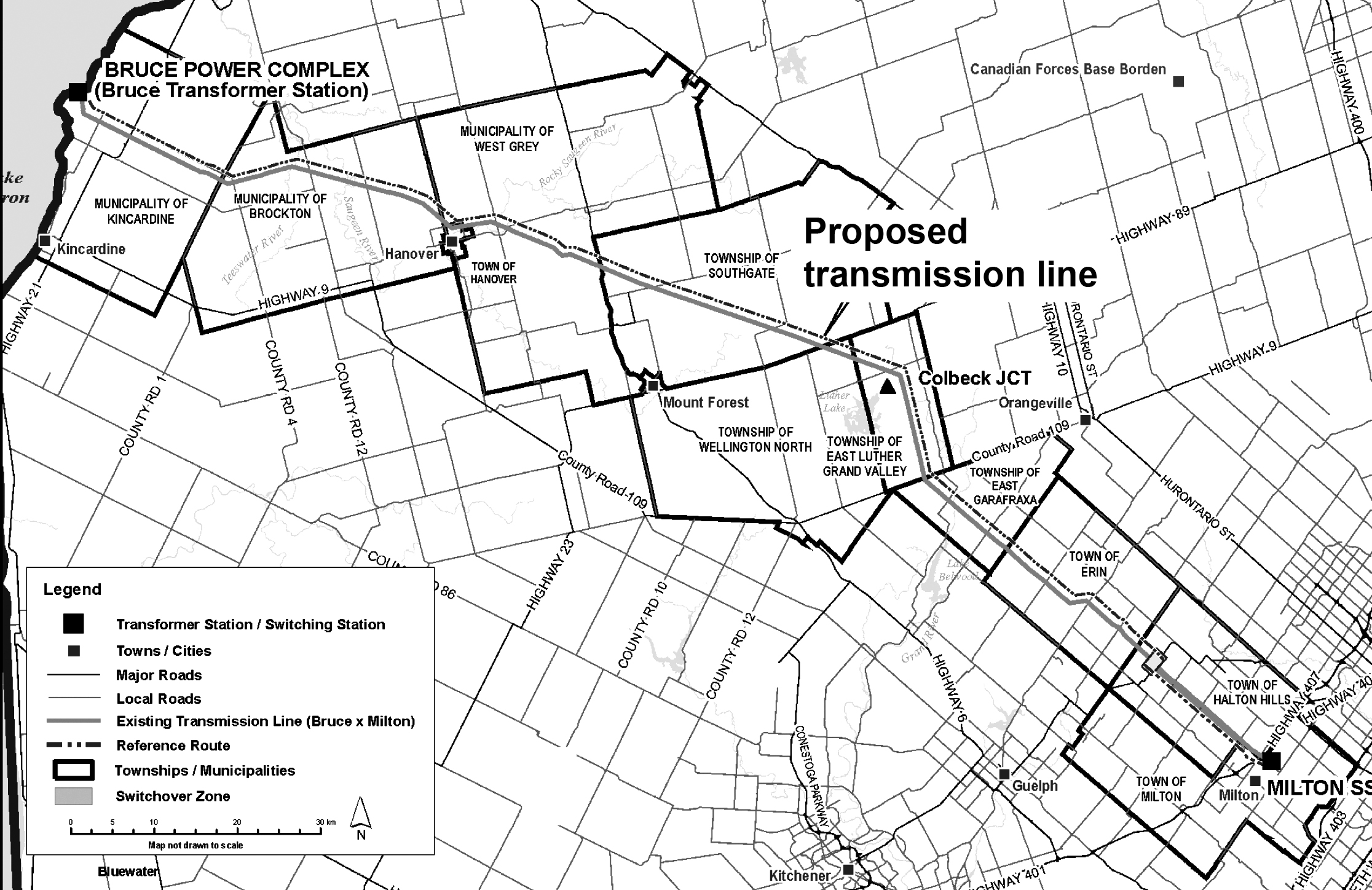Toronto: In a decision reached on September 15, the Ontario Energy Board gave the green light to Hydro One to build an additional transmission line from the Bruce area to central Ontario. The line will allow power from the Bruce nuclear station, as well as power from wind farms in the Bruce area, to reach markets in the more populous parts of central Ontario. The decision was complex and difficult, as there was fervent opposition from a number of landowners along the route and from other groups. APPrO and other generator organizations supported the proposal.
Hydro One plans to run a second 500 kilovolt transmission line beside an existing one for most of the route from Lake Huron to the Milton switching station in the Greater Toronto Area. The project is estimated to cost over $600 million, and will be the largest expansion to Ontario’s transmission system in 20 years. The issue has been under consideration at the OEB for almost 18 months, following the initial filing in March of 2007. The Board found that the new line would be preferable in economic terms compared to the alternatives. It said, “the benefits of the project in terms of reduced locked-in energy meet or exceed the costs of the project whether or not Bruce B is refurbished or replaced.”
 Some of the opponents suggested that Hydro One use a combination of specialized technology to get more use out of the existing lines rather than building the new lines. Fairly intensive debate arose over the wisdom and viability of the alternative solutions which included series capacitors and generation rejection systems. The Board found however, that although the alternative solutions would satisfy Ontario’s reliability standards as an interim measure, they would be considered unacceptable as an ongoing measure. In other words, the new line was judged to be necessary for Ontario to bring the power from the Bruce area to market while meeting its reliability requirements.
Some of the opponents suggested that Hydro One use a combination of specialized technology to get more use out of the existing lines rather than building the new lines. Fairly intensive debate arose over the wisdom and viability of the alternative solutions which included series capacitors and generation rejection systems. The Board found however, that although the alternative solutions would satisfy Ontario’s reliability standards as an interim measure, they would be considered unacceptable as an ongoing measure. In other words, the new line was judged to be necessary for Ontario to bring the power from the Bruce area to market while meeting its reliability requirements.
There were more than 50 registered intervenors including APPrO, Bruce Power and CanWEA.
Consistent with previous transmission project approvals, Hydro One was given an extensive set of responsibilities to meet, as part of the conditions of the approval from the OEB. For example, it will have to keep a log of every complaint arising during the construction process, and document its response to every complaint. It will be required to monitor the impacts of its construction work on nearby landowners, and file a monitoring report. The OEB approval is conditional on other licenses and approvals including an Environmental Assessment, which could impose additional conditions.
The Board decision touched on a range of issues that will likely be significant in future transmission cases before it. For a copy of the decision or more information on the process, please see the OEB website at: http://www.oeb.gov.on.ca/OEB/Industry+Relations/OEB+Key+Initiatives/Bruce-Milton+Transmission+Proceeding/Bruce-Milton+Transmission+Proceeding.
